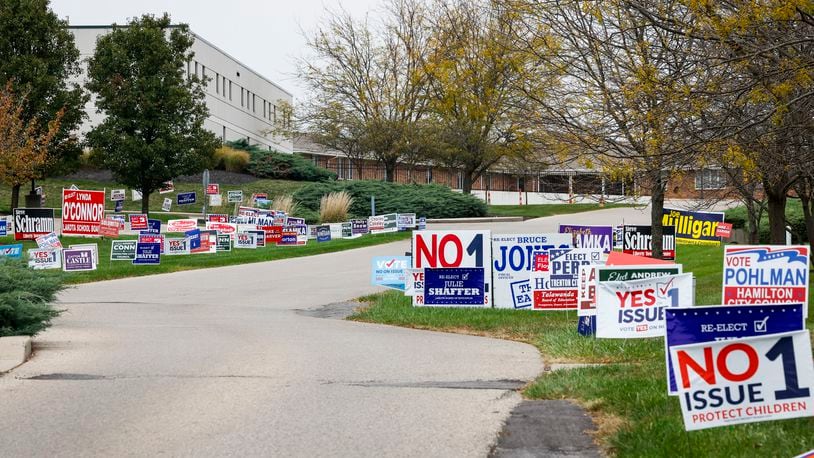Corbin said, “In Ohio odd-year elections are non-partisan unless a locality has a primary” but people are interested in the political breakdown so election officials are providing it. He said 1,495 Democrats, 1,846 Republicans and 1,441 voters who declared no party affiliation have cast ballots in the first nine days of early voting.
The topics driving the vote are Issue 1, which would amend the Ohio Constitution to grant all “individuals” the right of reproductive autonomy and Issue 2 which would legalize recreational marijuana.
In November 2021 only 677 voters came to the polls during the same time frame to vote for local city council, township trustee and school board races, and 2,046 had mailed in their ballots for a total of 2,723. In that election 858 Democrats, 1,225 Republicans and 640 non-declared voters cast ballots 18 days before the election.
There were a total of 49,861 votes cast in November 2021 or 19.7% turnout in the county of 253,519 registered voters.
Corbin said this election so far resembles turnout in 2015 when similar issues pulled in voters.
“It’s definitely trending higher than average odd year election, that’s for sure,” Corbin said. “I think it’s probably going to reflect more of the turnout for 2015, which is when there were two state issues as well, the redistricting and there was another recreational marijuana issue as well.”
Likewise, Warren County BOE director Brian Sleeth said that less than a week into early voting, his office saw almost the same number of in-person and by mail early voters that it saw in total for the fall 2021 election.
The BOE handled less than 9,500 ballots throughout the general election early voting season two years ago. As of Wednesday the board had received 7,650 ballots.
“I can only assume the increase is due to both state issues on the ballot,” said Sleeth. “I am not surprised at all and we have planned for at least a 50% turnout.”
Special elections are also not usually well attended, but in August voters were asked a question that many considered a precursor to the two November statewide issues, namely should it be more difficult — 60% versus a simple majority — to change the state’s constitution. It failed.
The voter turnout in Butler County was 35.7% with 90,116 total votes cast. The turnout in Warren County was 42.5%. Both counties are considered Republican strongholds, but the GOP-backed measure only passed in Butler County by 50.16% to 49.84% or 49.279 votes and 53% to 47% or 3,948 in Warren County.
Corbin said the Butler County ballot breakdown was 14,491 Democratic, 33,634 Republican and 41,991 nonpartisan.
In light of the narrow margin in the August special election, the Journal-News asked Butler County GOP chair Todd Hall what efforts are being made this time.
“Butler County Republicans are working hard to defeat Issue 1 and Issue 2,” Hall said. “Conservatives will turn out a strong vote here and around Ohio’s to protect children and families.”
Butler County Democratic Party chair Kathy Wyenandt said Issue 1 is a bipartisan one and there are plenty of Republicans voting for it. She agreed typically the local political parties wouldn’t be out in force for off-year elections, but they are.
“We are doing just some good old-fashioned talking to people,” she said. “We’re organizing everywhere and trying to build. November Issue 1 is a nonpartisan issue for sure, even though more Democrats tend to be supportive of reproductive freedom.”
About the Author
